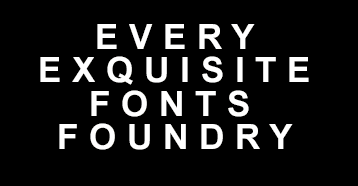Understanding Type Anatomy: Complete Cliff Notes to Typography Structure
- Rinleiya Ramsan

- May 16
- 2 min read

Knowing type anatomy is essential whether you're a designer, typographer, or simply someone curious about how type works. Typography is not only about choosing fonts; it's about understanding the structure that defines every letterform. Type anatomy refers to the parts of individual characters (letters and symbols) that make up a typeface
Here’s a clear breakdown of each element, organized by how it functions and where it appears within the structure of a letterform—so you can follow along with precision and purpose.
1. Baseline, Height Lines, and Spacing

These imaginary lines guide the alignment and size of letters:
Baseline: The line upon which most letters sit
Cap Height: The height of capital letters from the baseline.
X-height: The height of lowercase letters (like "x") excluding ascenders and descenders.
Ascender Line: Marks the top of ascending strokes (e.g., in "b," "d").
Descender Line: Indicates the bottom of descending strokes (e.g., in "p," "g").
Mean Line: The height of lowercase letters without ascenders or descenders (similar to x-height).
Leading: The vertical space between lines of text.
Kerning: The spacing between individual letter pairs.
Tracking: The uniform spacing between letters across a word or line.
2. Structural Parts of Letterforms

Main Strokes and Segments
Stem: The main vertical stroke of a letter (e.g., "l", "T").
Bar: The horizontal stroke (e.g., in "A", "H", "e").
Arm: A horizontal or upward sloping stroke that does not connect to a stem on one or both ends (e.g., in "T", "E").
Leg: A downward sloping stroke (e.g., in "K", "R").
Bowl: The curved, enclosed part of a letter (e.g., in "b", "o").
Loop: The bottom closed part of a two-storey lowercase "g".
Counter: The enclosed or partially enclosed negative space within a letter (e.g., "o", "e", "a").
Aperture: The open space in a partially enclosed counter (e.g., "c", "n", "s").
Eye: The enclosed counter or space within a lowercase "e."
3. Stroke Variations
Terminal: The end of any stroke that does not have a serif.
Ball Terminal: A circular or teardrop-shaped terminal (e.g., in "a", "c").
Spur: A small projection from the main stroke (e.g., in "G", "a").
Tail: A descending stroke often decorative (e.g., in "Q", "R", "j").
Ascender: The part of a lowercase letter that rises above the x-height (e.g., "h", "l").
Descender: The part of a lowercase letter that drops below the baseline (e.g., "p", "q").
Shoulder: A curved stroke that is not fully closed (e.g., in "n", "m").
Spine: The main curved stroke of the letter "S".
Open counter: A space inside letters that aren't completely closed, like in the letter "Y".
4. Letterform Classifications
While not strictly anatomical, some terms describe the character’s form and construction:
Monospaced: Each character takes up the same horizontal space.
Proportional: Characters take up variable widths.
Roman: Upright type style (not italic or slanted).
Italic: Slanted type style, usually cursive in appearance.
Oblique: Slanted type that is simply a skewed Roman (not a separate design like italics).
Understanding type anatomy is important for anyone working with typography. It not only helps in making more informed design decisions but also aids in precise communication with other designers and typographers. Whether you're customizing a logo, choosing a font, or refining a layout, this vocabulary provides the tools to speak the language of type fluently.



Comments